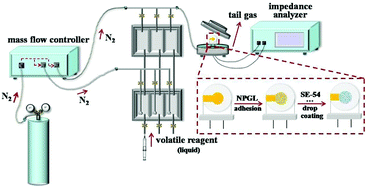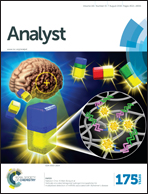Nanoporous gold leaf as a signal amplification agent for the detection of VOCs with a quartz crystal microbalance
Abstract
In this work, a novel sensing framework coupling nanoporous gold leaf (NPGL) and sensitive materials on a quartz crystal microbalance (QCM) sensor was developed for the detection of volatile organic compounds (VOCs). A bi-layer structure was established through a two-step modification process, where NPGL served as a loading platform to anchor more sensitive materials and provide a larger surface area. Sensitive materials for different target analytes (ethanol, benzene and n-heptane) were optimized, as well as the selection of the most suitable NPGL. The morphology of the bi-layer was characterized and the sensing performance, including the detection range, response time, reversibility, stability, etc., was investigated. The thermodynamics and kinetics of the gas adsorption process were studied by employing several classical models. It was found that the adsorption of the tested VOCs was more accurately represented using the Freundlich isotherm and the adsorption kinetics of these VOCs fitted well with pseudo second-order kinetics. The results of on-line monitoring demonstrated admirable sensing properties, fully indicating that the QCM sensor modified with a composite layer of sensitive material/NPGL has promising application prospects for real-time detection.


 Please wait while we load your content...
Please wait while we load your content...